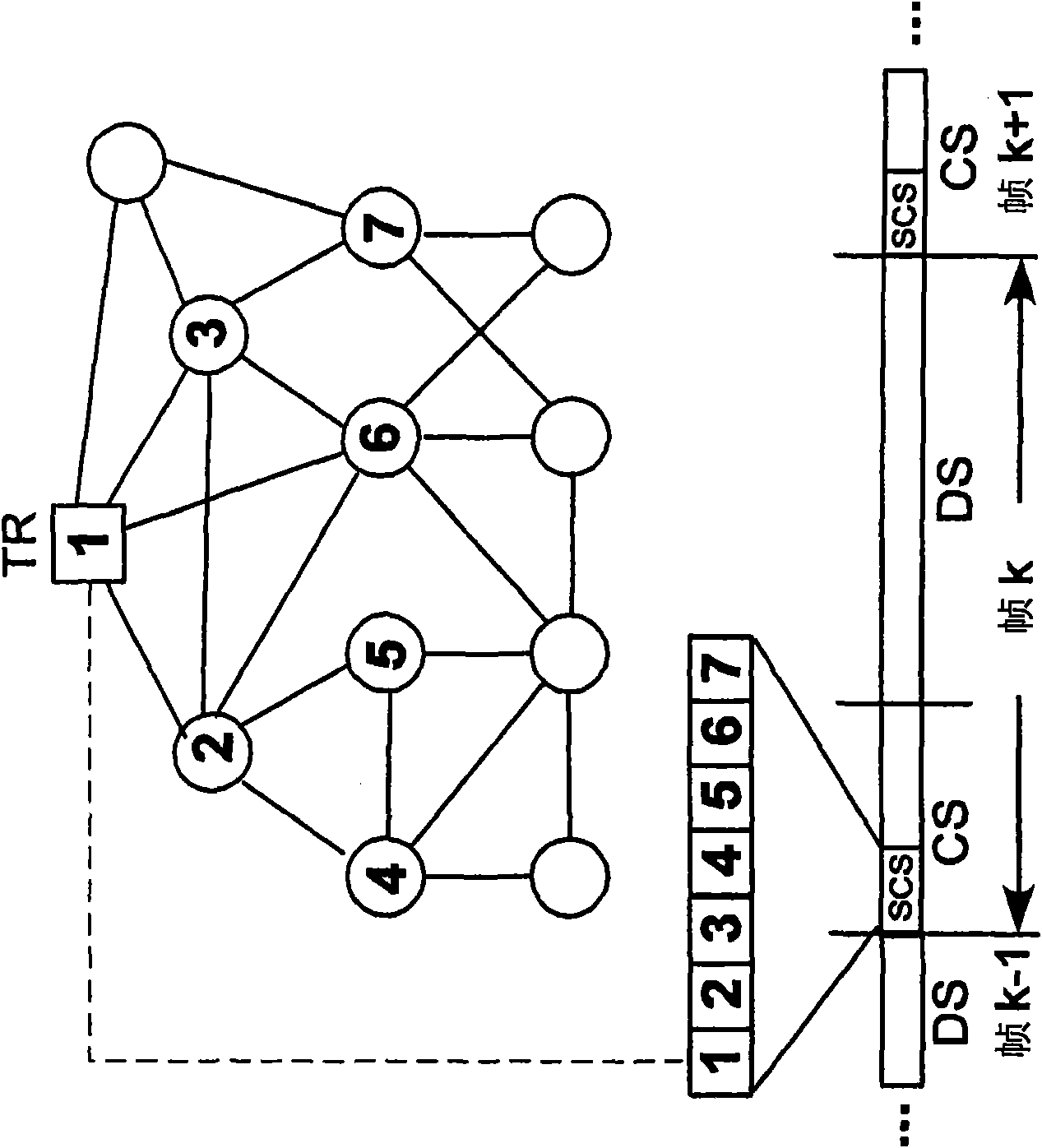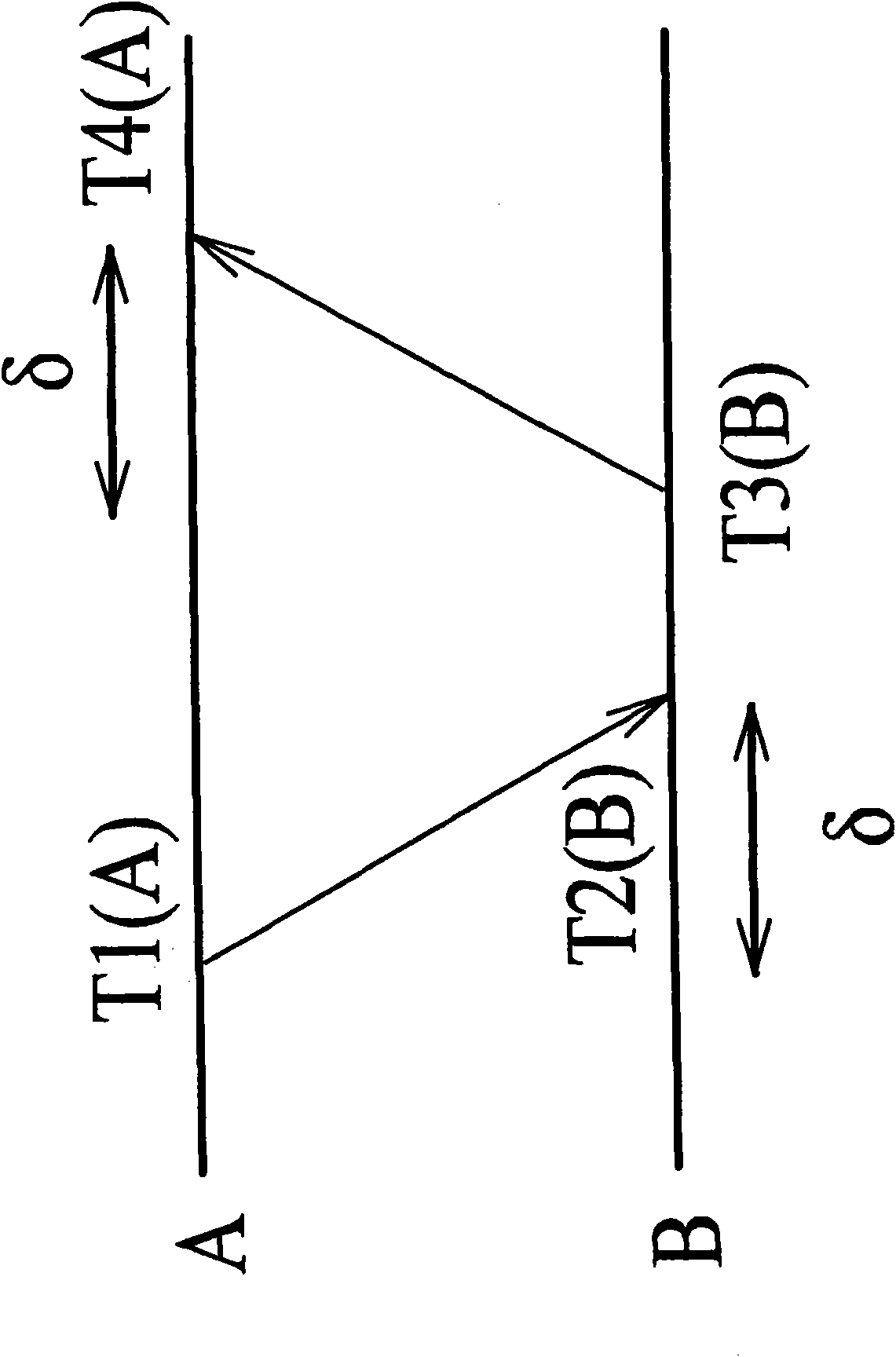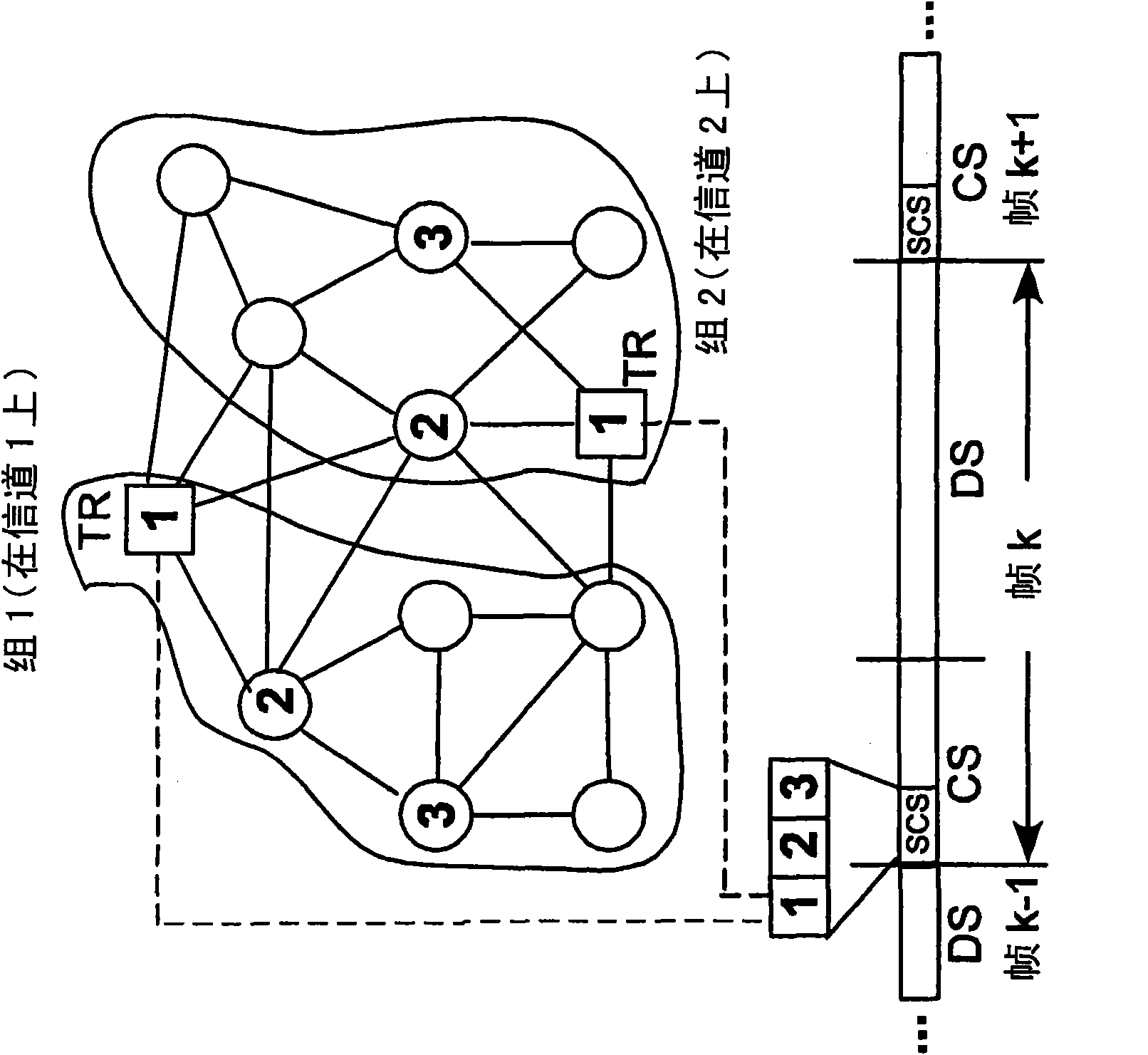Method and device for time synchronization in a tdma multi-hop wireless network
一种设备、外同步的技术,应用在通信网络领域,能够解决同步方法未满足TDMA协议有限延迟和低开销的要求等问题,达到高精度、实现时钟同步的效果
- Summary
- Abstract
- Description
- Claims
- Application Information
AI Technical Summary
Problems solved by technology
Method used
Image
Examples
Embodiment Construction
[0071]For example, the method according to the invention can be used in a multi-hop wireless network consisting of N nodes. In one embodiment, some of these nodes are time reference (TR) nodes. TR nodes are synchronized to a common time reference through out-of-band synchronization mechanisms such as GPS (Global Positioning System) devices and atomic clocks. The purpose of the synchronization algorithm of the present invention is to keep the clocks of all nodes in the network synchronized with the time reference of the TR nodes. The algorithm utilizes the slotted structure of the TDMA protocol to achieve precise synchronization and minimize communication overhead. This algorithm is performed during a Synchronous Control Subframe (SCS) which is part of a Control Subframe. The main idea is: a TR node triggers synchronization by sending a broadcast beacon in the first slot of the SCS, and makes the rest of the nodes quickly propagate the beacon to the network, while the rest of...
PUM
 Login to View More
Login to View More Abstract
Description
Claims
Application Information
 Login to View More
Login to View More - R&D
- Intellectual Property
- Life Sciences
- Materials
- Tech Scout
- Unparalleled Data Quality
- Higher Quality Content
- 60% Fewer Hallucinations
Browse by: Latest US Patents, China's latest patents, Technical Efficacy Thesaurus, Application Domain, Technology Topic, Popular Technical Reports.
© 2025 PatSnap. All rights reserved.Legal|Privacy policy|Modern Slavery Act Transparency Statement|Sitemap|About US| Contact US: help@patsnap.com



